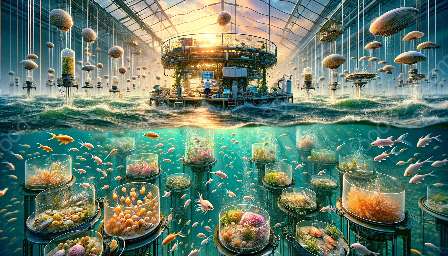Shellfish are fascinating creatures, integral to both marine biology and seafood science. Their anatomy and physiology play a crucial role in their biology and aquaculture, influencing the quality and sustainability of the seafood industry.
Understanding Shellfish Anatomy
The anatomy of shellfish is remarkably diverse, with each species exhibiting unique structures tailored to their environment and feeding habits. Typically, shellfish encompass a wide range of mollusks and crustaceans, including clams, oysters, mussels, lobsters, and shrimp.
Mollusks: Mollusks, such as clams, oysters, and mussels, possess a characteristic protective shell, mantle, and muscular foot. The shell, composed primarily of calcium carbonate, shields the soft body parts and provides structural support. The mantle secretes the shell material, while the muscular foot facilitates movement and burrowing.
Crustaceans: Crustaceans like lobsters and shrimp feature a jointed exoskeleton, a prominent characteristic of arthropods. This hard outer covering not only shields the internal organs but also serves as a support for muscle attachment and protection from predators.
Physiological Adaptations of Shellfish
Beyond their external anatomy, shellfish exhibit remarkable physiological adaptations that enable them to thrive in various aquatic environments.
Respiration: Shellfish utilize gills for respiration, extracting dissolved oxygen from water. Mollusks and crustaceans have specialized structures within their gills that enhance oxygen exchange, ensuring their survival in oxygen-depleted environments.
Feeding Mechanisms: The feeding habits of shellfish vary widely, with each species employing distinct mechanisms tailored to their ecological niche. Filter-feeding mollusks, for instance, use their gills to capture plankton and organic particles from the water, contributing to the natural filtration of marine ecosystems.
Shellfish Biology and Aquaculture
The study of shellfish biology is integral to the sustainable management of aquaculture practices. Understanding the life cycles, reproductive behavior, and genetic diversity of shellfish species is essential for the successful cultivation and conservation of these valuable marine resources.
Life Cycles: Shellfish exhibit diverse life cycles, involving larval stages that undergo metamorphosis before reaching maturity. Aquaculture efforts often focus on optimizing larval rearing conditions and developing effective spawning techniques to ensure the sustainability of shellfish populations.
Reproductive Behavior: The reproductive strategies of shellfish, including spawning patterns and fertilization mechanisms, are crucial aspects of aquaculture research. By understanding the reproductive biology of shellfish, aquaculturists can implement selective breeding programs to enhance desirable traits such as growth rate and disease resistance.
Seafood Science and Shellfish Quality
Seafood science encompasses the comprehensive study of shellfish quality, encompassing factors such as nutrition, sensory attributes, and food safety.
Nutritional Composition: Shellfish are renowned for their high protein content, omega-3 fatty acids, and essential minerals such as iron and zinc. Analyzing the nutritional composition of shellfish facilitates the development of nutritious and sustainable seafood products.
Sensory Attributes: The sensory evaluation of shellfish involves assessing key attributes such as texture, flavor, and aroma. Seafood scientists use sensory analysis to gauge consumer preferences and optimize processing methods to maintain the quality of shellfish products.
Food Safety: Ensuring the safety of shellfish for human consumption is paramount. Seafood science encompasses the evaluation of potential contaminants, toxins, and microbiological hazards, leading to the implementation of stringent quality control measures in the seafood industry.
Conclusion
The anatomy and physiology of shellfish are integral components of their biology, aquaculture, and seafood science. From their intricate structures to physiological adaptations, understanding shellfish biology contributes to sustainable aquaculture practices and the production of high-quality seafood products.

